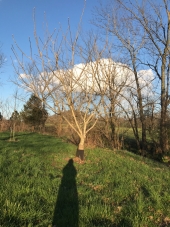








Best luck: satisfaction
Greatest curse, greed





List of Bryant RedHawk's Epic Soil Series Threads We love visitors, that's why we live in a secluded cabin deep in the woods. "Buzzard's Roost (Asnikiye Heca) Farm." Promoting permaculture to save our planet.




















List of Bryant RedHawk's Epic Soil Series Threads We love visitors, that's why we live in a secluded cabin deep in the woods. "Buzzard's Roost (Asnikiye Heca) Farm." Promoting permaculture to save our planet.




Best luck: satisfaction
Greatest curse, greed









Best luck: satisfaction
Greatest curse, greed

|
On my planet I'm considered quite beautiful. Thanks to the poetry in this tiny ad:
Rocket Mass Heater Resources Wiki
https://permies.com/w/rmh-resources
|




